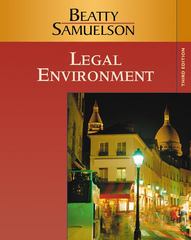Question
Case Study of Airline Industry The recession that began in 2008 hit the airline industry very hard as both businesses and households cut back their
Case Study of Airline Industry The recession that began in 2008 hit the airline industry very hard as both businesses and households cut back their travel plans. According to the International Air Transport Association, the industry lost more than $10 billion in 2008. However, by 2009, despite the fact that the economy was still extremely weak and airline traffic was still well below normal, the industry's profitability began to rebound. And by 2010, even in the midst of continued economic weakness, the airline industry's prospects had definitely recovered, with the industry achieving a $9 billion profit that year. As Calin Rovinescu, President and CEO of Air Canada, mentioned in the company's 2010 Annual Report, "We made significant progress in 2010 toward the goal of achieving long-term, sustained profitability. Although we benefitted from the general upturn in the global airline industry, our strong performance in 2010 was also due to deliberate actions taken to transform and strengthen the company." His statement was supported by a turnaround in Air Canada's operating income from an operating loss of $316 million in 2009 to an operating income of $278 million in 2010, and the operating income improved to $437 million in 2012. How did the airline industry achieve such a dramatic turnaround? Simple: fly less and charge more. In 2011, fares were 14% higher than they had been the previous year, and flights were more crowded than they had been in decades. In addition to cutting back on the number of flightsparticularly money losing onesairlines implemented more extreme variations in ticket prices based on when a flight departed and when the ticket was purchased. For example, the cheapest day to fly is Wednesday, with Friday and Saturday the most expensive days to travel. The first flight of the morning (the one that requires you to get up at 4 A.M.) is cheaper than flights departing the rest of the day. And some claim the cheapest time to buy a ticket is Tuesday at 3 P.M. Eastern Standard Time, with tickets purchased over the weekend carrying the highest prices. And it doesn't stop there. As every beleaguered traveller knows, airlines have tacked on a wide variety of new fees and increased old onesfees for food, for a blanket, for headphones, for checked bags, for carry-on bags, for the right to board a flight first, for the right to choose your seat in advance, and so on. Airlines have also gotten more inventive in imposing fees that are hard for travellers to track in advancesuch as claiming that fares have not risen during the holidays while imposing a "holiday surcharge." In 2010, airlines collected more than $4.3 billion from fees for checking baggage and changing tickets, up 13.5% from 2009. But the question in the minds of industry analysts is whether airlines can manage to maintain their currently high levels of profitability. In the past, as travel demand picked up, airlines increased capacityadded seatstoo quickly, leading to falling airfares. "The wild card is always capacity discipline," says William Swelbar, an air- line industry researcher. "All it takes is one carrier to begin to add capacity aggressively, and then we follow and we stop doing all the good work that's been done."
Question:
Read Case Study of Airline Industry and answer the following questions: a. How would you describe the price elasticity of demand for airline flights given the information in this case? Explain. b. Airlines have imposed fees on services such as checked bags and changing tickets, and they have earned billions of dollars from these fees. What does this tell you about the price elasticity of demand for these services? Explain. c. Use concept of price elasticity of supply to explain under what conditions the airline industry will be able to maintain its high profitability in the future. Explain.
Please add references.
Step by Step Solution
There are 3 Steps involved in it
Step: 1

Get Instant Access to Expert-Tailored Solutions
See step-by-step solutions with expert insights and AI powered tools for academic success
Step: 2

Step: 3

Ace Your Homework with AI
Get the answers you need in no time with our AI-driven, step-by-step assistance
Get Started


